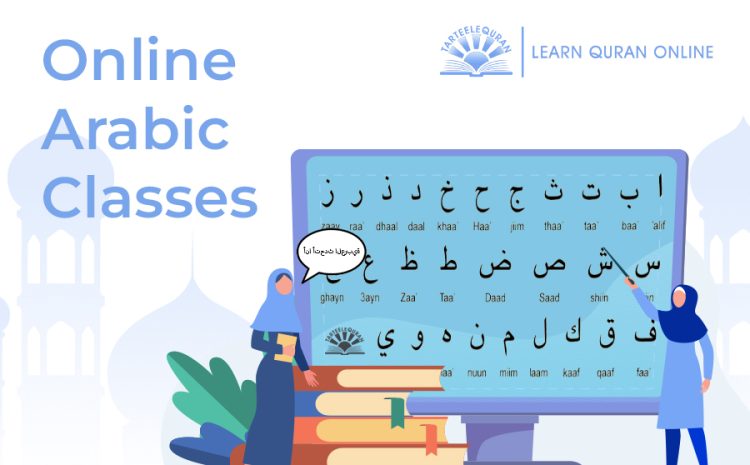What is ADHD?
Teaching the Quran to children is a noble endeavour, however, it becomes a very challenging task to teach it to kids with attention deficit hyperactivity disorder (ADHD). ADHD is a neurodevelopmental disorder that affects a child’s ability to focus, control impulses, and regulate energy levels.
In the context of teaching the Quran, traditional methods may not always be effective for children with ADHD. This article explores the challenges faced by kids with attention deficit hyperactivity disorder and offers insights into adapting teaching methods to make the learning experience more accessible and enjoyable.
Challenges Faced by Kids with ADHD
Difficulty in Maintaining Attention: Kids with ADHD often struggle to sustain attention for extended periods, making it challenging for them to engage in lengthy Quranic lessons. Conventional teaching methods, which may involve long periods of reading and memorization, can lead to frustration and disinterest.
Impulsivity and Hyperactivity: Impulsivity and hyperactivity can make it difficult for children with ADHD to sit still and concentrate. Traditional classroom settings may not be conducive to their learning style, leading to a sense of restlessness and a lack of focus.
Varied Learning Styles: Children with attention deficit hyperactivity disorder often have diverse learning styles, and a one-size-fits-all approach may not cater to their individual needs. Some may respond better to visual stimuli, while others may benefit from hands-on activities.
Executive Functioning Challenges: ADHD can affect executive functions such as organization, planning, and time management. These challenges may manifest as difficulty in keeping track of assignments, managing time effectively, and staying organized in their Quranic studies.
Issues Faced in Teaching through Conventional Methods
Rote Memorization: Traditional Quranic teaching methods often rely heavily on rote memorization, which can be particularly challenging for children with ADHD. The repetitive nature of memorization may lead to boredom and disengagement.
Lack of Interactive Learning: Conventional Quranic education may lack interactive and engaging elements, which are crucial for capturing the attention of children with ADHD. Passive learning methods may not stimulate their minds effectively.
Limited Use of Technology: In an age where technology is an integral part of education, the conventional methods of teaching the Quran may not leverage the benefits of interactive apps, educational games, and multimedia resources that could enhance the learning experience for children with attention deficit hyperactivity disorder.
Adapting Teaching Methods for Children with ADHD:
Short and Varied Lessons: Break down Quranic lessons into shorter, more manageable segments. Varied activities and changing the focus frequently can help maintain their attention and interest.
Incorporate Visual Aids: Use visual aids such as images, charts, and videos to complement verbal teachings. Visual stimuli can enhance understanding and retention for children with attention deficit hyperactivity disorder.
Hands-On Activities: Integrate hands-on activities into the learning process. This could involve creating crafts related to Quranic stories or engaging in role-playing exercises to bring the teachings to life.
Interactive Learning Apps: Leverage educational apps designed to teach the Quran interactively. These apps often incorporate gamification, making the learning process enjoyable and engaging for children with ADHD.
Flexible Learning Environment: Create a flexible learning environment that accommodates the unique needs of children with ADHD. Allow for movement breaks and consider alternative seating arrangements to accommodate their need for physical activity.
Positive Reinforcement: Implement a system of positive reinforcement to acknowledge and reward the child’s progress. Positive feedback can boost their confidence and motivation to continue their Quranic studies.
Individualized Learning Plans: Recognize and cater to the individual learning styles of children with ADHD. Develop personalized learning plans that consider their strengths and weaknesses, fostering a supportive and inclusive educational environment. It’s important to understand that ADHD kids have a very short window of attention where they function optimally. It is best to first understand the ADHD kid’s behavior and how they learn before devising any learning plans for them.
- Build Trust and Rapport: Develop a strong, trusting relationship with the child. Kids with ADHD require special bonding to teach them.
- Simplify Language: Adapt the language used to teach the Quran to be more straightforward and concise. Break down complex concepts into smaller, manageable parts.
- Interactive Learning: Utilize interactive methods, such as role-play, hands-on activities, and arts and crafts, to help children connect with Quranic stories and teachings.
- Social Stories: Create social stories or visual narratives that explain Quranic principles and stories clearly and simply.
- Patience and Flexibility: Teaching the Quran to attention deficit hyperactivity disorder children requires patience and flexibility. Kids with ADHD require patience from teachers, especially during their mood swings.
5. Benefits of Quranic Education for Kids with ADHD
Spiritual Connection: Learning the Quran offers a deep spiritual connection. It allows ADHD kids to engage with their faith, promoting inner peace and a sense of belonging within their religious community.
Enhanced Concentration: The structured nature of Quranic learning can help improve an autistic child’s concentration and attention span, skills that can be applied to other areas of their lives.
Emotional Regulation: Through Quranic education, children can learn about the principles of patience, compassion, and empathy, promoting emotional regulation and self-control.
Supportive Educational Environments: Effective Quranic education for autistic children requires collaboration between parents, teachers, and the community.
Teacher Training: Educators working with autistic children should receive training on autism awareness and strategies for effective teaching.
Parent Involvement: Encourage parents to be actively involved in their child’s Quranic education. This collaboration helps in understanding the child’s unique needs and progress.
Inclusive Communities: Mosques and religious institutions should strive to become more inclusive by offering resources and support for autistic children and their families.
Conclusion
Teaching the Quran to kids with attention deficit hyperactivity disorder requires a thoughtful and individualized approach that acknowledges their unique learning styles and challenges. By leveraging the structured nature of Quranic teachings, incorporating repetition, and embracing a multisensory learning environment, educators and parents can create a positive and enriching experience for these children. The combination of visual, auditory, and kinesthetic elements in Quranic learning provides a holistic approach that caters to the diverse needs of children with ADHD. In conclusion, the strategy to teach the Quran to kids with ADHD involves recognizing their strengths, addressing their challenges, and creating an inclusive learning environment. By embracing the inherent advantages of Quranic teachings, educators and parents can contribute to the cognitive and emotional development of children with ADHD, fostering a love for learning and a deeper connection with their faith.






